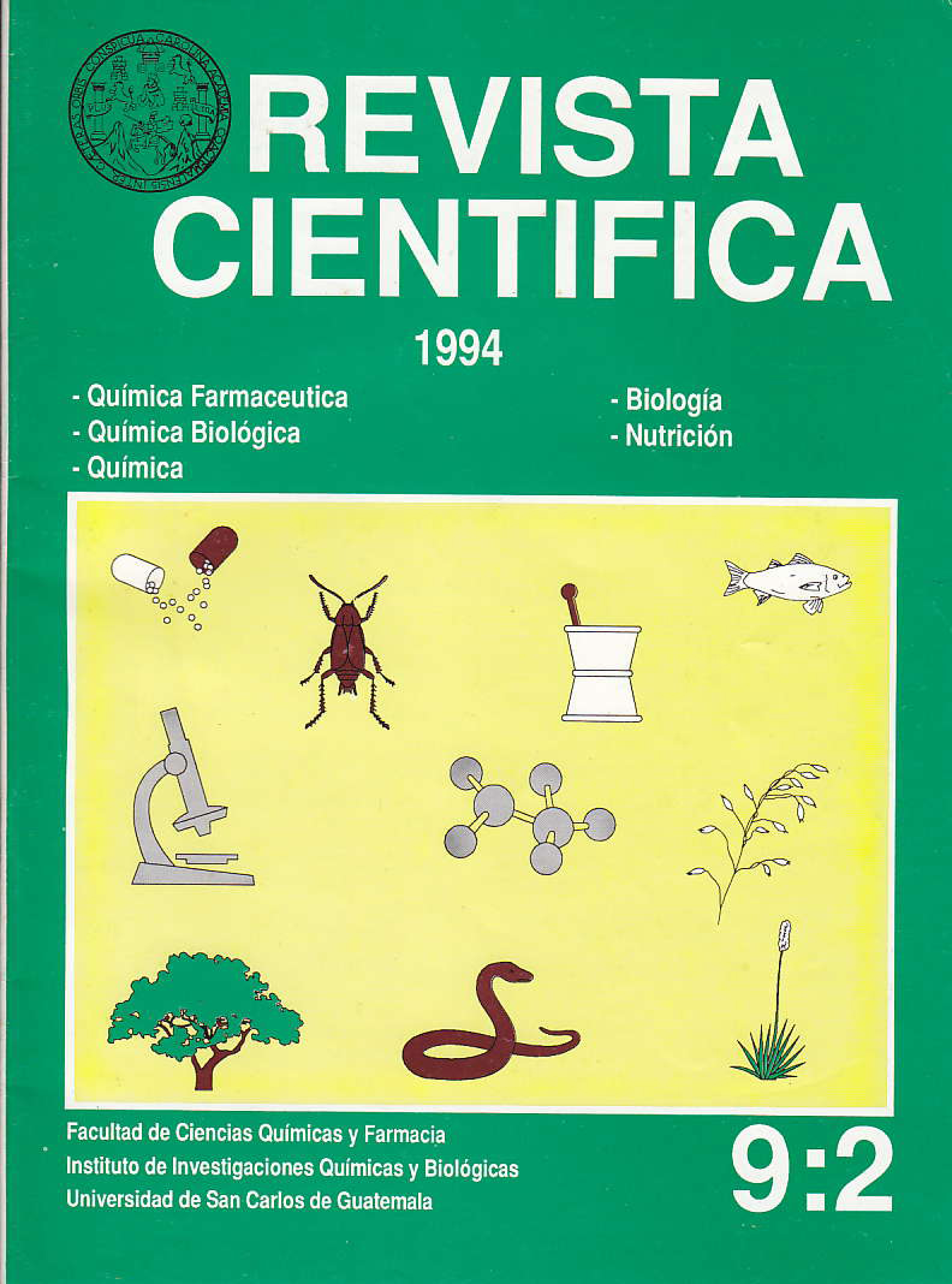Evolution of tree cover from parallel 17°00' onwards in the department of Peten from 1978 to 1988.
DOI:
https://doi.org/10.54495/Rev.Cientifica.v9i2.377Keywords:
evolution, tree cover, parallel 17°00' onwards, department of Peten, 1978 to 1988Abstract
This research is a preliminary characterization of the evolution of tree cover in the region from parallel 17°OO' onwards, in the department of Petén, during the decade from 1978 to 1988. During the field work, several forested regions of the Department were visited, including the protected areas managed by the University of San Carlos through the Center for Conservation Studies CECON. In some specific areas, transects were made to characterize the existing vegetation (protected areas El Solz and Laguna El Tigre). The final results of the research are presented in a comparative table of the cover presented during that decade. To achieve the results, a thorough office work was carried out based on the interpretation of the Lansat image, photointerpretation of conventional aerial photography, quantification of areas and the usual office work of graphic engineering.Downloads
References
AGUILAR C. M.A y VASQUEZ J. Recursos Naturales Renovables de Guatemala (Suelo, Agua, Floray Bosque), Guatemala, Tercer Congreso Nacional de Agronomía, 1 982, D1RI A-DIGESA, Ministerio de Agricultura, 1 983, 144p.
CASTAÑEDA L; CABRERA, V. GONZALES, J. Diagnóstico de la situación de los Recursos Naturales Renovables de Guatemala. 1 1 Seminario sobre Ciencia, Técnica y Sociedad y Desarrollo en Centro América, Guatemala, 1985.
GODOY J.C. Areas Silvestres Protegidas Potenciales de Petén, Guatemala, Centro de Estudios Conservacionistas, Universidad de San Carlos de Guatemala, 1985.
HEDERSTROM T. Guatemala: Análisis de la Situación Actual y Futura del Sector Forestal, Guatemala, FAO, 1977,
INSTITUTO GEOGRAFICO MILITAR, Guía para la aplicación de Sensores Remotos, Guatemala, Ministerio de la Defensa-IGM, 1984, 70 p
IMBACH A. Estrategia Regional para el Desarrollo Sostenible de Petén, Guatemala. Seminario sobre Recursos Naturales y Medio Ambiente en Petén, Santa Elena, Guatemala, 1989, 26 p.
LANLEY J.P. Los Recursos Forestales Tropicales, Roma, PNUMA, FAO, 1982.
MATTEUCCI - COLMA . Métodos para el Estudio de la Vegetación, Washington DC. Organización de los Estados Americanos, 1984.
MITATAK W. estimación de la Deforestación y la Reforestación necesaria. Guatemala, UNDP- FAO, 1975.
NATIONS J. KOMER, D. Central América Tropical Rain Forest, Positive Steps for Survival. AMBIO 12 (5), 1983.
PONCIANO I. Cubierta Arbórea de Guatemala (Primera Aproximación), Guatemala, Sub-Programa de Investigaciones Forestales de la Escuela de Biología de la Universidad de San Carlos de Guatemala, 1979.
STEPHEN D.J. DROOP, M. Plants I n Danger, Switzerland- Cambridge UICN, 1986.
SECRETARIA GENERAL DEL CONSEJO NACIONAL DE PLANIFICACION ECONOMICA, Plan de Desarrollo Integral de Retén, Guatemala, Volumen 1, 1986
SECRETARIA GENERAL DEL CONSEJO NACIONAL DE PLANIFICACION ECONOMICA, INSTITUTO NACIONAL FORESTAL, INSTITUTO GEOGRAFICO NACIONAL. Mapa de Cobertura y Uso Actual de la Tierra, Escala 1:500,000 (Memoria explicativa, Guatemala 1981).
VALLE DAWSON C. Vademécum Forestal, Guatemala, Ministerio de Agricultura, Unidad de Comunicación Social, 1982.
Downloads
Published
How to Cite
Issue
Section
License
Copyright (c) 1994 Julio Rafael Morales A., Marco Antonio Aguilar C.

This work is licensed under a Creative Commons Attribution 4.0 International License.
Authors who publish with this journal agree to the following terms:
- Authors retain copyright and grant the journal right of first publication with the work simultaneously licensed under a Creative Commons Attribution License 4.0 that allows others to share the work with an acknowledgement of the work's authorship and initial publication in this journal.
- Authors are able to enter into separate, additional contractual arrangements for the non-exclusive distribution of the journal's published version of the work (e.g., post it to an institutional repository or publish it in a book), with an acknowledgement of its initial publication in this journal.
- Authors are permitted and encouraged to post their work online (e.g., in institutional repositories or on their website) prior to and during the submission process, as it can lead to productive exchanges, as well as earlier and greater citation of published work.









